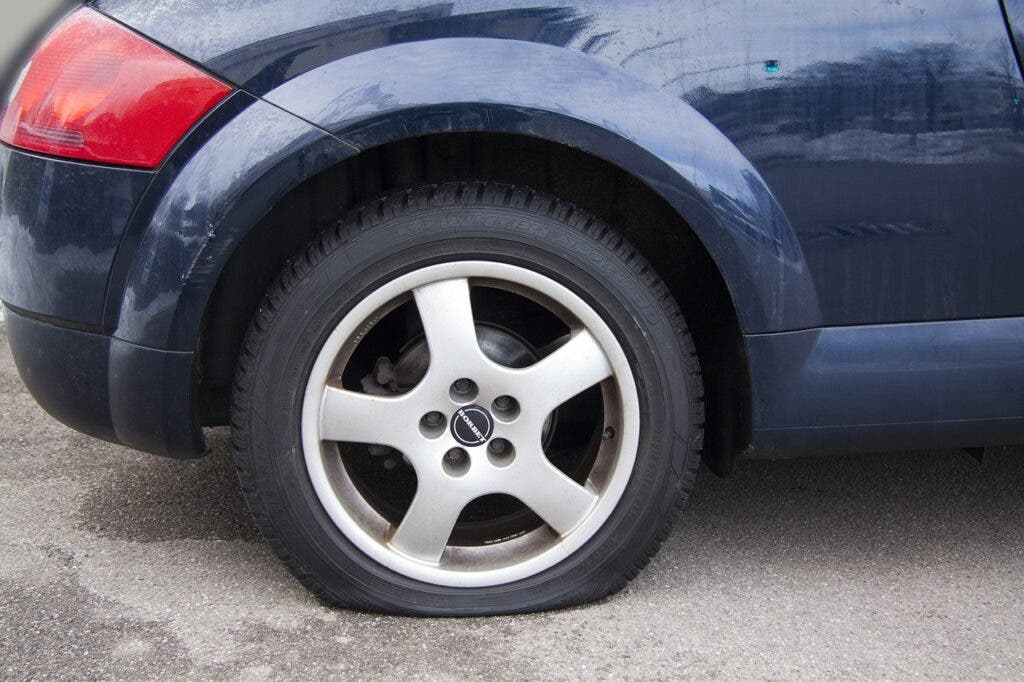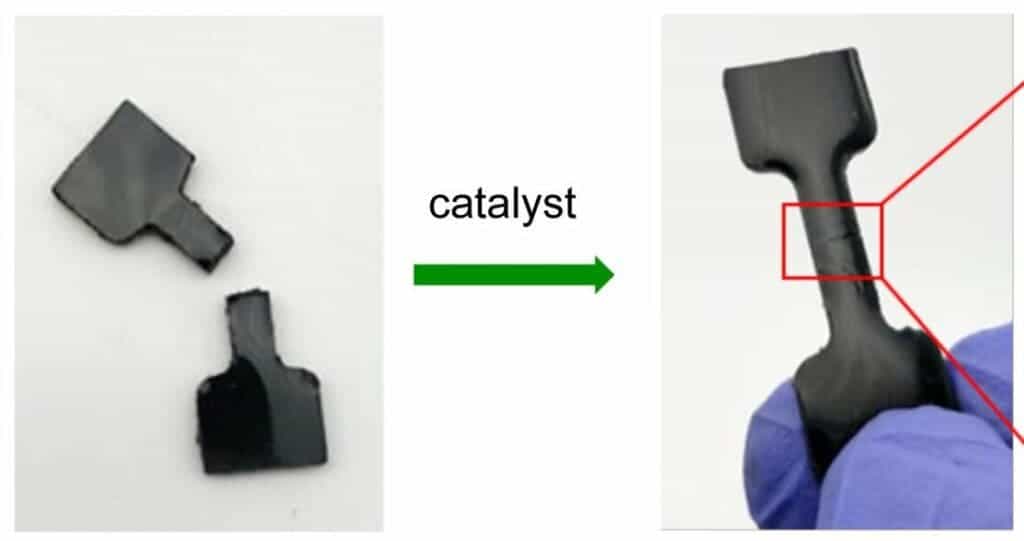
Few things are as annoying as a flat tire with no spare in the trunk. Wouldn’t it be nice if you could just snap your fingers and have the flat tire magically fix itself? Researchers in Australia and the UK have thought long and hard to develop tires with a novel composition that enables them to be repaired on the go.
No magic though — just good old chemistry
The tire is made of 50% sulfur mixed with canola cooking oil and a chemical called dicyclopentadiene (DCPD). All three main ingredients are byproducts of industrial activity and are generally discarded. For instance, DCPD is a waste product from petroleum refining.
However, what’s appealing about this new rubber material isn’t necessarily its environmental friendliness. Instead, where it shines is in its ability to self-repair in the presence of a catalyst.

When an amine catalyst is applied to a flat tire, a chemical reaction is triggered that completely repairs the damage and returns the tire to its original strength within minutes — even at room temperature. Take that, super glue!
Essentially, the new rubber material is a “latent adhesive” that is resistant to water and corrosion. Once the catalyst is applied, the polymers in the rubber join together.
“The rubber bonds to itself when the amine catalyst is applied to the surface. The adhesion is stronger than many commercial glues,” said Dr. Tom Hasell, University of Liverpool researcher and co-author of the new study.
If the tire is torn to shreds beyond repair or has reached the end of its life cycle, it can be easily recycled, according to Justin Chalker of Flinders University.
“This study reveals a new concept in the repair, adhesion and recycling of sustainable rubber,” Chalker, who is the team lead for the new study, said in a statement.
Most rubbers, as well as ceramics and plastics, are not recyclable. In Australia alone, 48 million tires are discarded but only 16% are recycled — the rest flood landfills or are illegally dumped across the country or, even worse, in the ocean.
“It is exciting to see how the underlying chemistry of these materials has such wide potential in recycling, next-generation adhesives, and additive manufacturing,” Chalker concluded.
The findings were reported in the journal Chemical Science.









